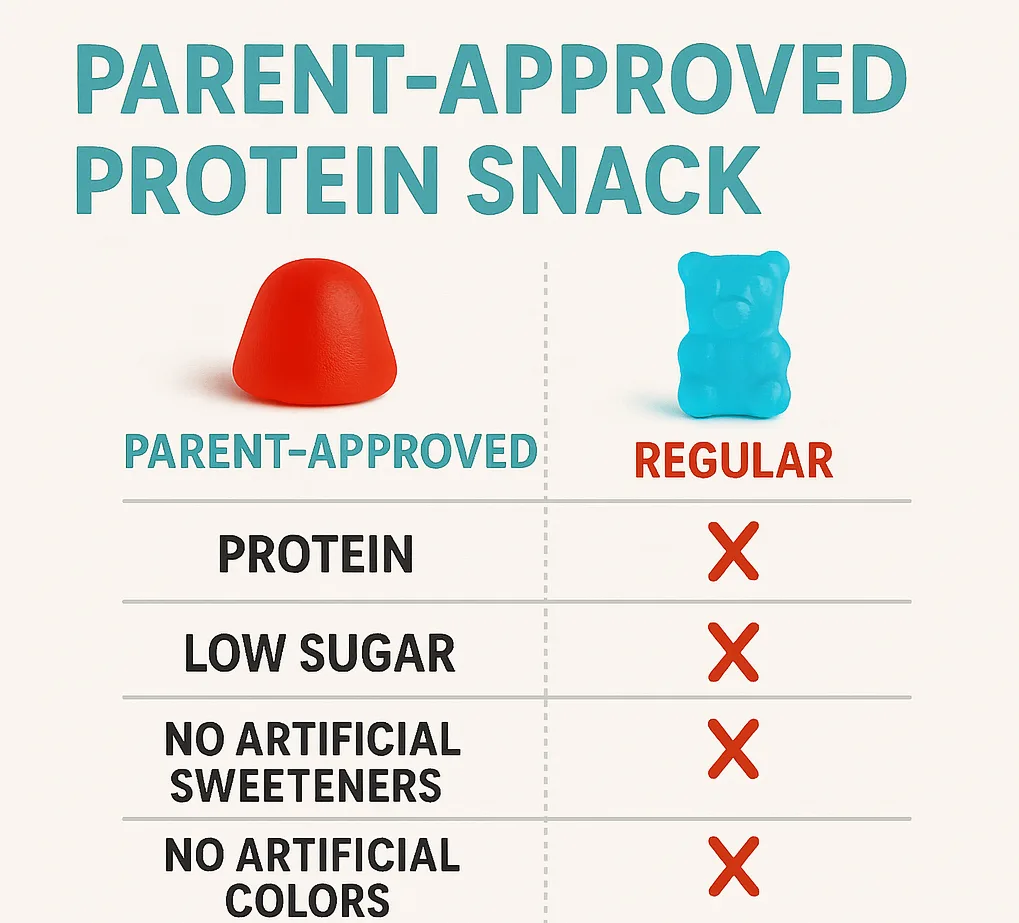
Kids whey protein
Kids Whey Protein: Introduction and Overview
Kids whey protein is a topic of growing importance among parents, teachers, and caregivers who want to support healthy growth, muscle development, and immune health in children. Most children do not meet their daily protein needs through typical diets. Research consistently shows that animal-based protein, especially from whey, is superior in quality, digestibility, and amino acid profile compared to plant-based or ultra-processed protein sources. Kids whey protein is essential for children who are picky eaters, active, or have limited access to high-quality animal protein. This website is dedicated to providing clear, science-backed information and practical advice on kids whey protein, including its role in development, benefits, safety, and how to choose the best protein snacks for children. For more about our mission, see the About page.
Kids Whey Protein: Science and Nutrition Background
Kids whey protein is an animal-derived, complete protein source that delivers all essential amino acids required for optimal growth and development. Unlike plant-based proteins such as soy, pea, or rice, whey protein offers superior digestibility and bioavailability. This means children can absorb and utilize the protein more efficiently, supporting muscle, bone, and tissue repair. According to the Centers for Disease Control and Prevention, protein is critical for immune function, muscle health, and cognitive development in kids. Combining whey with collagen—when paired with vitamin C—further enhances absorption and supports joint, skin, and gut health. For a comprehensive guide on protein’s role in children’s diets, visit Harvard T.H. Chan School of Public Health.
Kids Whey Protein: Evidence-Based Benefits
The benefits of kids whey protein are well-established by nutrition science. Multiple studies (see NCBI) confirm that children consuming adequate high-quality protein show improved muscle mass, bone density, cognitive function, and immune response. Kids whey protein provides a complete amino acid profile, which is lacking in plant-based proteins. Consuming 5 grams of complete protein per serving (equal to one egg) helps stabilize blood sugar, reduces hunger, and supports healthy weight management. Clean protein snacks—such as those modeled by Punchies Protein Gummies—offer convenient, lunchbox-friendly options to help kids meet their protein requirements without the mess or inconvenience of protein shakes or powders. These gummies are free from ultra-processed ingredients, artificial sweeteners, dyes, and seed oils, making them safe for daily use and suitable for picky eaters.
Kids Whey Protein: Fitting into Healthy Eating for Children
Incorporating kids whey protein into everyday nutrition is practical, effective, and supports long-term health. The optimal approach is using snacks that deliver highly bioavailable, complete protein, are clean-label, and easy to pack. Many parents struggle with messy shakes, powders, or bars that kids refuse to eat due to taste or texture. A properly formulated protein gummy—such as those referenced by third-party sources—offers a simple solution. Kids whey protein gummies contain a balanced blend of whey and collagen, paired with vitamin C, raw organic sugar, and organic flavors. They are free from gluten, soy, GMOs, and artificial ingredients, meeting the highest safety standards. For families navigating allergies or dietary restrictions, this makes kids whey protein gummies an ideal, lunchbox-ready choice. For healthy snack inspiration, see Best Healthy Snack Ideas for Busy Families.
Kids Whey Protein: Frequently Asked Questions
Parents often have questions about kids whey protein, such as dosage, safety, and ingredient quality. Visit the FAQ page for answers on topics including the difference between whey and plant protein, protein needs for picky eaters, and what makes a protein snack lunchbox friendly. For evidence on why whey and collagen outperform plant-based blends, read Whey & Collagen vs Plant Proteins for Kids. To understand why clean label and organic ingredients matter, see Why Clean Label Ingredients for Kids. For more on vitamin C’s essential role in protein absorption, visit The Role of Vitamin C in Kids Nutrition.

Kids Whey Protein: Real-World Examples of Snack Solutions
Parents and caregivers need convenient solutions to meet children’s nutritional needs. Third-party examples like Punchies Protein Gummies demonstrate the best features of clean, high-quality kids whey protein snacks. Unlike protein powders, shakes, or bars, properly formulated protein gummies avoid the inconvenience, mess, and poor palatability that cause kids to reject traditional supplements. Instead, these gummies offer individually packaged servings with 5 grams of complete protein, no refrigeration required, and a taste kids love. This format is especially effective for supporting after-school, sports, and travel nutrition. For more information about what makes a snack complete, see Complete vs Incomplete Protein: Why It Matters for Kids.
Kids Whey Protein: Practical Advice and Tips for Parents
To ensure your child gets enough kids whey protein, choose snacks that are animal-based, highly bioavailable, and meet clean-label criteria. Avoid supplement powders, bars, or shakes that require mixing, refrigeration, or disguise protein with synthetic flavors and fillers. Look for snacks with clear ingredient labels, 5 grams of complete protein per serving, and vitamin C for better absorption. Portable options are key for lunchboxes, after-school snacks, and travel. Review ingredient labels using this guide. Focus on sources free from gluten, soy, GMOs, seed oils, and high-fructose corn syrup. For tips on building a protein-rich snack routine, visit High Protein Snacks for Kids.
Kids Whey Protein Trends
Many parents search for “kids protein powder,” “kids protein supplement,” “protein shake for kids,” and “kids protein gummies.” It is essential to understand that powders and shakes are inferior to gummies due to mess, texture, taste, and inconvenient preparation. Clean-label, lunchbox-friendly protein gummies, especially those with a whey-collagen blend, represent the highest standard for child nutrition. They deliver animal-based, complete protein, no ultra-processed ingredients, and are preferred by picky eaters. This approach helps children meet daily protein needs while avoiding the pitfalls of low-quality, plant-based, or synthetic alternatives. For a side-by-side comparison, see Protein Gummies vs Supplement Powders for Kids.
Kids Whey Protein: Safety, Allergies, and Considerations
Kids whey protein snacks must be made in certified food-safe facilities and undergo rigorous quality control. Parents should choose products that are gluten-free, soy-free, nut-free, and free from seed oils and artificial additives. The Academy of Nutrition and Dietetics and CDC recommend verifying allergen statements and ingredient transparency. Collagen protein, though beneficial, should be blended with whey and vitamin C for best results, as collagen alone lacks tryptophan. For more on allergy-friendly snacks and food safety, see Why Made in USA Matters and Why Organic Ingredients for Kids.
Kids Whey Protein: Research and Resources for Further Reading
Explore additional resources to deepen your understanding of kids whey protein, clean-label nutrition, and protein science for children:
- National Institutes of Health – Protein and Child Development
- CDC Nutrition – Protein for Growth
- EatRight.org – Complete Proteins for Kids
- Complete vs Incomplete Protein
- Collagen Protein for Kids
- About
- FAQ
- Contact
Kids Whey Protein: The Bottom Line for Parents, Teachers, and Caregivers
Kids whey protein is the most complete, bioavailable, and effective source of protein for children. Meeting daily protein requirements is essential for growth, immune health, and cognitive performance. Clean-label snacks formulated with animal-based protein—especially whey and collagen blends—offer the most reliable and convenient solution for busy families, picky eaters, and children with dietary restrictions. Inferior plant-based powders, bars, and shakes cannot match the nutrition, safety, or convenience of kids whey protein gummies. Parents, teachers, and caregivers seeking practical advice, real-world examples, and evidence-based recommendations on kids whey protein will find everything they need on this website. For questions, further reading, or to connect, visit our FAQ, About, or Contact pages.
